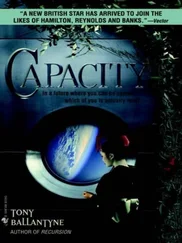There were ‘cultural’ objections as well. In 1952 the French Communist author Roger Vailland asserted that, ‘[i]n a country like France, where—except for two months a year, and not every year—it is always so cold that a food-box on the window ledge will keep the roast for a weekend, and more, a fridge is a “symbol” an (American) “mystification.’
Only in 1963 did Electricité de France begin upgrading their urban power lines to permit the running of multiple appliances—the countryside followed some years later.
An exponential increase nicely captured in the opening scene of Fellini’s 8½ (1963). Even by Fellini’s own standards, this urban traffic jam would have been bizarrely implausible just a few years earlier.
Local response to this innovation followed historical precedent: English motorists, regarding meter charges as a form of unauthorized taxation, withheld payment. The French registered their disapproval by decapitating Parisian meters.
The first European hypermarkets, defined as stores with at least 25,000 square feet of space on a single level and typically located at least two miles from a town center, began to appear at the end of the 1960s. By 1973 there were about 750 of these giant stores in Western Europe, 620 of them in France and West Germany alone. In Italy in that same year there were just three. Twenty years later there were fully 8,000 hypermarkets and superstores in France… but still just 118 in Italy.
Between 1959 and 1973, the number of visitors to Spain rose from 3 million to 34 million. Already in 1966 the number of annual tourists in Spain—17.3 million—far surpassed the totals for France or Italy. In parts of the north-east and Spain’s Mediterranean littoral, the transition from a pre-industrial economy to the age of the credit card was accomplished in half a generation. The aesthetic and psychological impact was not always positive.
With the exception of the Iberian peninsula and the southern Balkans, where radio ownership in 1960 was roughly comparable to that of Western Europe thirty-five years earlier, and where people still clustered in cafés to listen to news and music.
Paul Ginsborg, A History of Contemporary Italy. Society and Politics 1943-1988 (1990), p. 240.
It is perhaps worth emphasizing the marginality of jazz. Like American folk music in the sixties, jazz was only ever appreciated and bought by a small number of people in western Europe: usually educated, bourgeois or bohemian (or, typically, both) and rather older than the average rock-and-roll enthusiast. The situation in eastern Europe was a little different. There jazz was American (and black), therefore both exotic and subversive, Western yet radical—and carried a charge quite lacking further West.
The American writer William Stead published The Americanization of the World in 1902: anticipating his subject, perhaps, but not by much.
In 1960 the German economy grew at a rate of 9.0 percent per annum, the British economy by 2.6 percent: the slowest rate in the developed world, except for Ireland—which at this time was still far from ‘developed’.
Quoted in Peter Hennessy, Never Again. Britain 1945-1951 (1993), p. 117.
Liberal parties and thinkers in Germany and Italy, like the small free-market wing of Britain’s Conservative Party, did not join in this consensus. But at the time—and in part for this reason—they wielded little influence.
Contrast Italy, which had 13 different governments and 11 different prime ministers in the same period—or France, which had 23 governments and 17 prime ministers between 1945 and 1968. Long-serving party leaders were a Swedish speciality: Erlander’s predecessor as Chairman of the Swedish Social Democratic Party, Per Albin Hansson, had held the post from 1926-1946.
The Saltsjöbaden Pact resembled in certain respects the Arbeitsfrieden (Labour Peace) reached in Switzerland the previous year, in which employers and workers agreed to establish a system of non-confrontational collective bargaining that was to prove an enduring cornerstone of the country’s future stability and prosperity. However, whereas the Swiss Arbeitsfrieden was intended to keep government out of economic bargaining, the Saltsjöbaden Pact committed the government to working in harmony with owners and employees for the common interest.
The suicide rate in western Europe by 1973 was indeed highest in the most developed and prosperous countries: Denmark, Austria, Finland and West Germany. It was lowest at the poorer fringes: per head of population, the Danish suicide rate was six times that of Italy, fourteen times that of Ireland. What this suggests about the depressant effect of prosperity, climate, latitude, diet, religion, family structures or the welfare state was obscure to contemporaries and remains unclear today.
Ironically, it was the Swedish Social Democrats who for a long time showed more interest in Vienna’s early-twentieth-century ‘Austro-Marxist’ theorists Otto Bauer and Rudolf Hilferding. Their Austrian successors, by contrast, were typically happy to put all that behind them—save for the occasional echo, as in the Austrian Socialist Party’s 1958 program, where it was opaquely asserted that ‘democratic socialism occupies a position between capitalism and dictatorship’…
For this translation, see Bark & Gress, From Shadow to Substance. A History of West Germany , Volume 1 (1992), Chapter 16.
The destruction of the selective state schools of England merely drove more of the middle class to the private sector, thus improving the prospects and profits of the fee-charging ‘public schools’ that Labour’s radicals so despised. Meanwhile selection continued, but by income rather than merit: parents who could afford it bought a home in a ‘good’ school district, leaving the children of the poor at the mercy of the weakest schools and the worst teachers, and with much reduced prospect of upward educational mobility. The ‘comprehensivisation’ of British secondary education was the most socially retrograde piece of legislation in post-war Britain.
With the demise of clerical politics, political anti-clericalism lost its raison d’être—ending a cycle of quarrels and obsessions that had endured for nearly two centuries.
In Ireland, however, the authority of the Church and its involvement in daily politics was sustained rather longer—well into the nineties.
In a representative outburst, Osborne writes of British royalty as ‘the gold filling in a mouthful of decay’.
Godard in particular had decidedly eclectic tastes. He is reported to have been ‘mesmerized’ by Nicholas Ray’s Johnny Guitar (1954) starring Joan Crawford.
Italians could certainly design cars, as any motor racing enthusiast would confirm. It was Italian coach-builders who first removed mudguards, running boards and other redundant excrescences from small family cars—much as Milanese tailors in the same years were eliminating trouser turn-ups and inventing the sharp, clean lines and cut of the modern Italian suit. What Italian car manufacturers appeared unable to do with any consistency was build the cars that their draughtsmen had imagined.
Читать дальше












